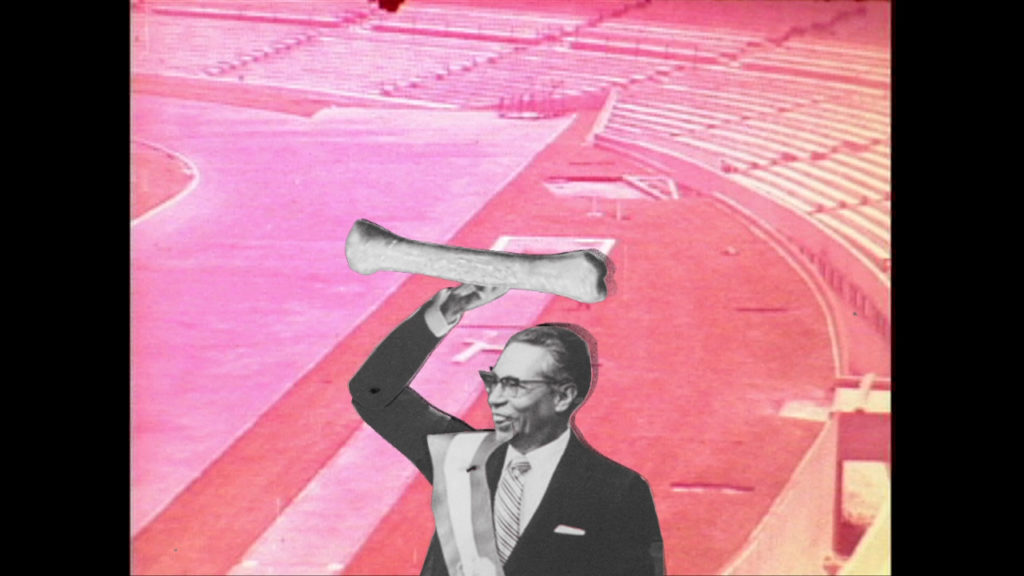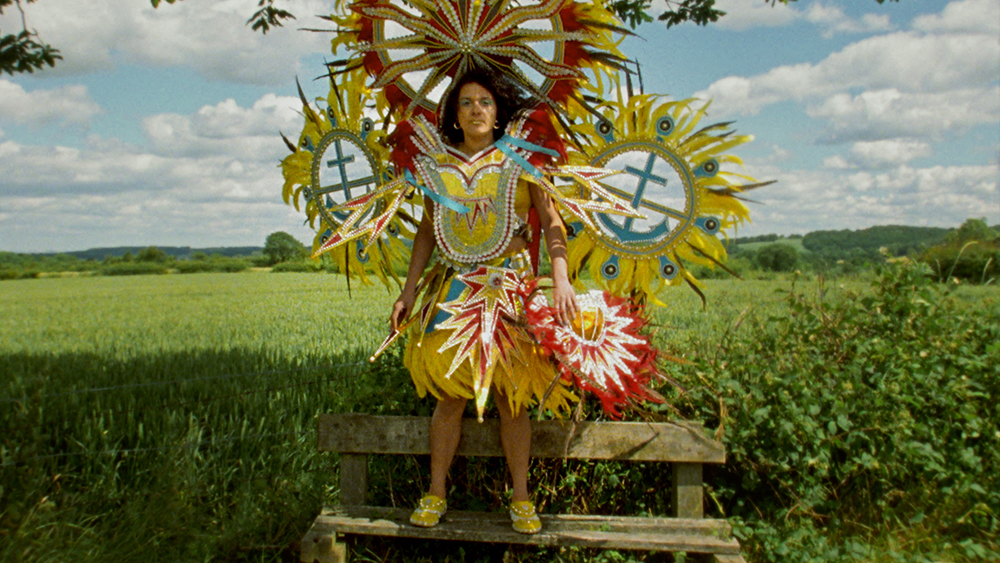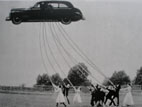Announcing the Canyon Cinema Discovered Programs!
Posted May 3rd, 2022 in Announcements, Events and Screenings, News / Events
We’re thrilled to finally announce the screening line-ups for our inaugural Canyon Cinema Discovered programs, which will debut this fall in San Francisco and online. Stay tuned for details!




Prime Time Reverie
Curated by Aaditya Aggarwal
From cosmetic commercials to women-led talk shows to narrative melodrama, television catered to feminized viewers is a formally diverse genre, nudging, socializing, and mirroring its spectators in intimate and discerning ways. Capturing the urgent, anchoring spirit of prime time telecasts, Prime Time Reverie stages a fragmented history of television as a women’s medium. The works in this program engage multiple tides of broadcasting, from soapy to confessional, from sensationalist to documentarian. Weaving an absent or corporeal presence through each work, televised portrayals of womanhood—hermetic, large, versatile—incite daydreams among a mass populace, flirting with histories of technology, desire, and visuality.
- Chronicles of a Lying Spirit (by Kelly Gabron) (Cauleen Smith, 1992)
- No No Nooky TV (Barbara Hammer, 1987)
- Removed (Naomi Uman, 1999)
- Waiting for Commercials (Nam June Paik and Jud Yalkut, 1966-72, 1992)
- No Land (Emily Chao, 2019)
- MTV Artbreak (Dara Birnbaum, 1986)
- Kiss the Girls: Make Them Cry (Dara Birnbaum, 1979)
- That Woman (Sandra Davis, 2018)
- 10:28,30 (Paige Taul, 2019)
- Still Life with a Woman and Four Objects (Lynne Sachs, 1986)




Playing in the Dark: Watery Experiments
Curated by Chrystel Oloukoï
Playing in the Dark engages the various ways in which blackness haunts the sea and is haunted by the sea. Borrowing from Toni Morrison, “playing in the dark” references the subdued Africanist presence which mediates imaginations of water in the wake of variegated yet entangled transoceanic slave trades but also takes seriously darkness as a subversive ecological milieu, against lures of transparency. In the works gathered here, nothing is left untouched by the confounding qualities of water and its corrosive opacities, from bodies to the environment, to the materiality of film itself. As such, “playing in the dark” also references attempts in Black experimental filmmaking to chart paths in which cameras do not write with light but probe shadows in search of “an aesthetics of turbulence whose corresponding ethics is not provided in advance” (Glissant, Poetics of Relation).
- By the Sea (Toney W. Merritt, 1982)
- What the Water Said Nos. 1-3 (David Gatten, 1998)
- Aqua (Samba Félix N’diaye, 1989)
- The Dislocation of Amber (Hussein Shariffe, 1975)
- Giverny I (Négresse Impériale) (Ja’Tovia Gary, 2017)
- Pattaki (Everlane Moraes, 2019)
- What the Water Said Nos. 4-6 (David Gatten, 2006-07)
- Towards the Colonies (Miryam Charles, 2016)
- Song for the New World (Miryam Charles, 2021)




Trajectories of Self-Determination: Experimental Cinema’s Embrace of Jazz
Curated by Juan Carlos Kase
Experimental cinema has long embraced American vernacular music as a generative model, whether it supplied a formal template, an affective inspiration, or a point of cultural reference. From the collective polyphony of Charles Mingus’ kinetic ensembles to the gale and squall of Joe McPhee’s storming cornet, the improvisational energies of jazz – as well as blues and other popular-modernist musics – have continued to inspire American avant-garde filmmakers. Collectively, the films in this program explore the myriad ways in which experimental cinema has drawn from African-American improvised music and embraced its spontaneous, collaborative, polyrhythmic, and lyrical energies.
- Dufus (aka Art) (Mike Henderson, 1970/72)
- Up and Atom (Doug Wendt, 1970)
- Not a Music Video (Toney W. Merritt, 1987)
- Pilgrim (Cauleen Smith, 2017)
- Mirror Animations [Film #11] (Harry Smith, 1957)
- 28.IV.81 (Bedouin Spark) (Christopher Harris, 2009)
- The Clown (Donna Cameron, 1998)
- Many Thousands Gone (Ephraim Asili, 2015)
- Four Women (Julie Dash, 1975)
- All My Life (Bruce Baillie, 1966)




Insurgent Articulations
Curated by Ekin Pinar
A strong interest in the social, political, and cultural contexts has always been part and parcel of a good variety of experimental filmmaking practices, even though canonical works on experimental cinema tend to focus solely on the formal explorations that supposedly reflect the filmmaker’s own (hermetic) subjectivity. Because of this exclusive focus on formal experimentation, the socio-historical, cultural, and representational politics, ethics, and concerns of much experimental work remained unnoticed until recently. Focusing on the theme of the aesthetics of socio-political unrest and protest, this program showcases examples of experimental filmmaking that fictionally constructed or experimentally reconstructed in formally explorative and reflexive ways demonstrations, rallies, marches, and sit-ins.
- Pig Power (Single Spark Films, 1969)
- Demonstration ’68 (Dominic Angerame, 1968-74)
- Solidarity (Joyce Wieland, 1973)
- Sisters! (Barbara Hammer, 1973)
- New Left Note (Saul Levine, 1968-82)
- Gay Power, 1971/2007/2012 (Sharon Hayes, Kate Millett, and The Women’s Liberation Cinema, 2012)
- On the nature of the bone (Elena Pardo, 2018)
- A Protest, A Celebration, A Mixed Message (Rhea Storr, 2018)
- B.L.M. (Toney W. Merritt, 2020)
Supplemental screening:
- Investigation of a Flame (Lynne Sachs, 2001)


